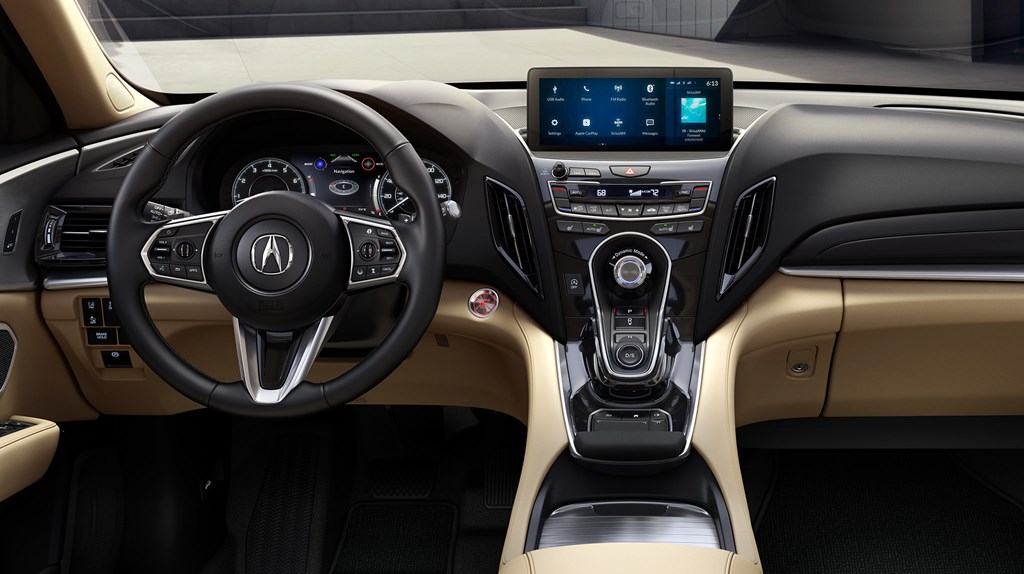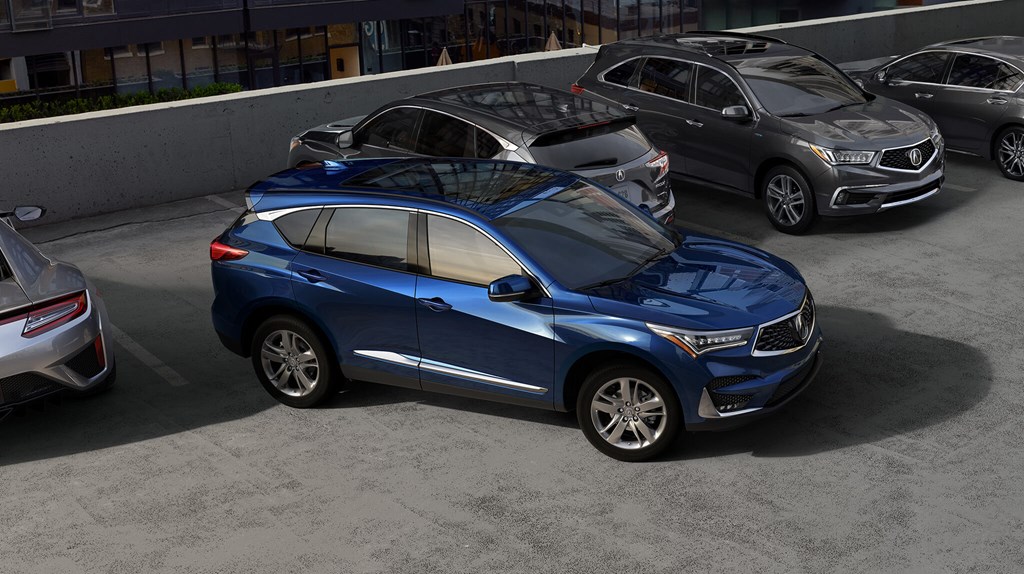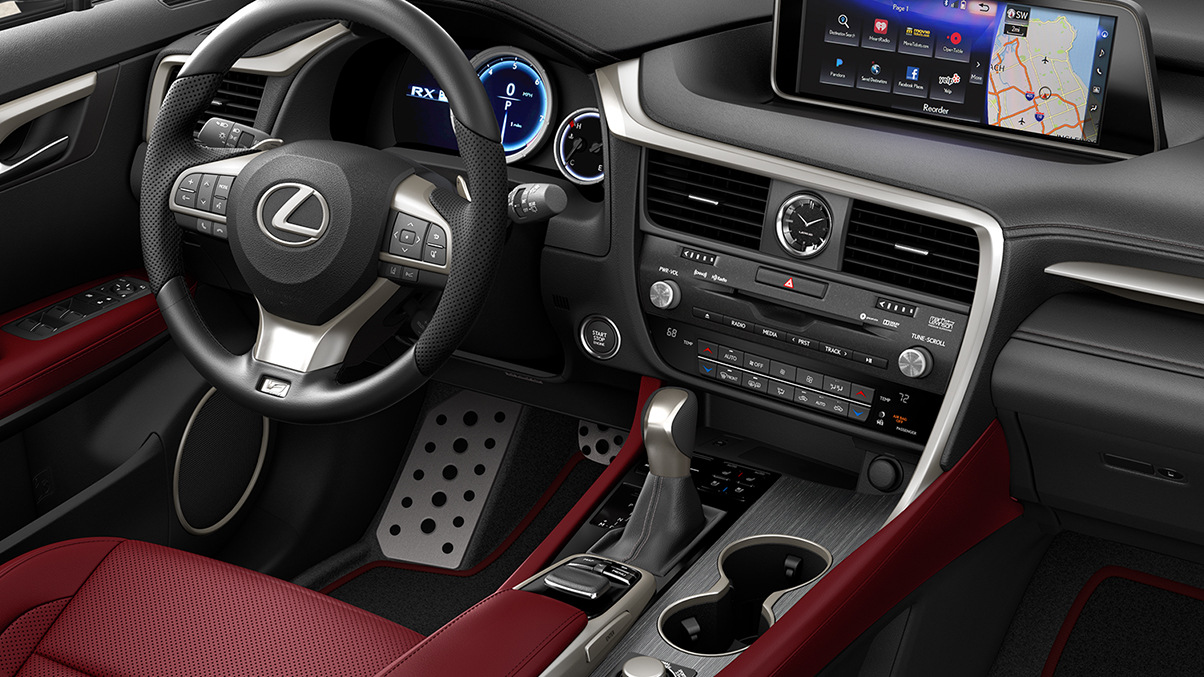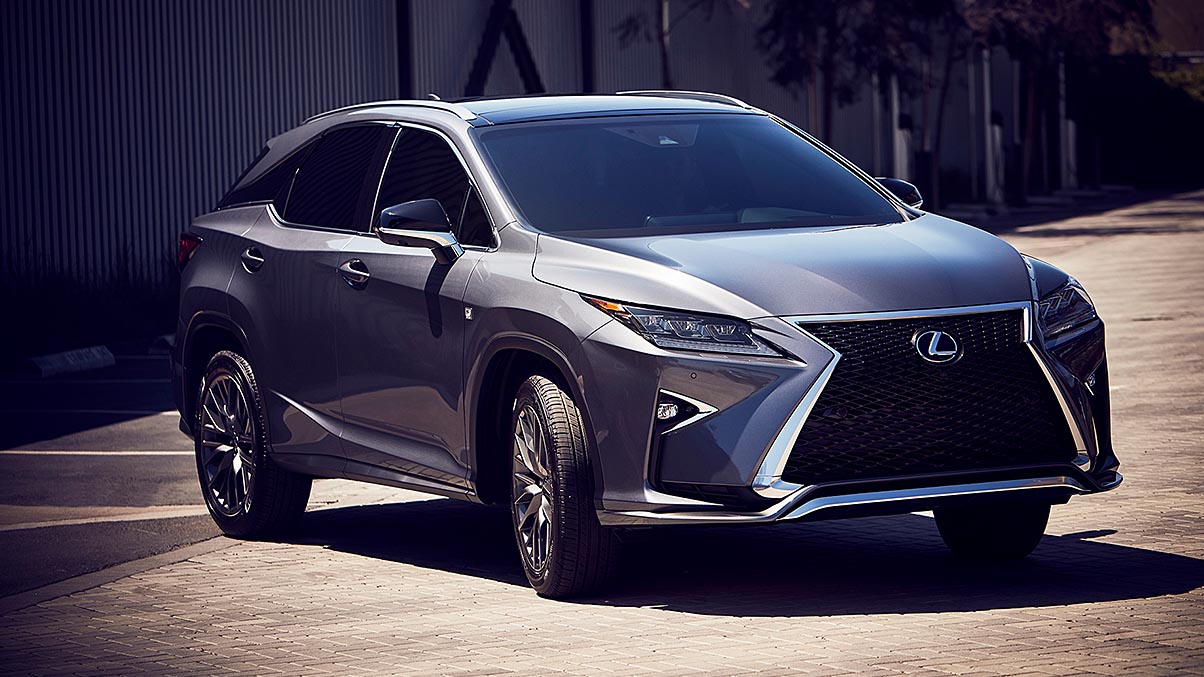Executive Wheels: Luxury SUV Tales
How do two strikingly similar models – the Acura RDX and the Lexus RX 350 AWD – compare?
Jeff Rundles //March 28, 2019//


Executive Wheels: Luxury SUV Tales
How do two strikingly similar models – the Acura RDX and the Lexus RX 350 AWD – compare?
Jeff Rundles //March 28, 2019//

These two vehicles belong in the same conversation because they are, on balance, amazingly similar: both are mid-sized SUVs, and both are stalwarts in the middle of their respective lines, and those lines, Acura and Lexus, are the luxury brands of two of Japan’s most venerable nameplates, Honda and Toyota, respectively. I used the terms “respective” and “respectively” for purposeful double entendre, as both terms were used in the sentence in a grammatically correct way, but I also wanted to convey how much I respect both of these vehicles. They both also had amazingly similar feel, as they are both pretty much the same size (the Lexus is slightly larger), both were appointed nicely in a very luxurious way, both were very quiet, and both handled very well. About the only overall discernable difference is that the Acura RDX, on base in Front Wheel Drive, is some $6,000 less expensive, a difference that holds up through the upgrades.
I personally attribute the price difference to the demand, as Acura is a less popular line than Lexus. Just to show you my point, U.S. sales of the Acura RDX were a respectable 63,580 units in 2018; the Lexus RX topped out at a whopping 111,641 for the year, which is fairly amazing for a luxury vehicle, and tops for luxury SUVs last year.
But I know first-hand that both these vehicles are popular and well-liked by their owners: my neighbor, just recently, bought a 2018 Lexus RX, which replaced her 2006 RX; and some very good friends of mine just purchased a 2019 Acura RDX for the man in the relationship; his significant other has had a 2007 RDX since new and is still driving it. Please note the longevity of both – and incidentally, my neighbor got the new RX but the old one went to her son.

The RDX debuted as a 2007 model, replacing the Acura MDX, a model that still exists but in 2007 was made larger to accommodate a third row of seating. Frankly, however, I have always had trouble with the models in the Acura line. While the MDX and the RDX have maintained their names, it seems as though all of the cars in line change names all the time – at least more often than the competition. In the long run, the luxury division of Toyota has been much more successful – and long lasting – than Acura has been for Honda, and that’s a shame.
That is particularly a shame here in this RDX because it is such an excellent vehicle. The first thing I wrote down in my test-drive notes was “Very elegant vehicle,” following that with “the seats are amazing.” Those seats were very nice leather all around, but featured suede inserts in the seat and seat back that provided the best of all worlds: leather seating is wonderful but can be much colder than cloth on a brisk morning, but the suede leather inserts are like both. I loved them.
Before I get to some of the downsides with the RDX, I’ll talk about some of the other big plusses. This vehicle drives superbly, and handles like a dream. The engine here is a 2.0-liter 4-banger with a turbo that puts out some 272 horsepower, which actually feels like half again as much power. This SUV will rock if you want it to, with no apparent turbo lag. Indeed, coupled with a 10-speed automatic transmission, the go mechanisms here are as smooth as any I have ever driven, and quite responsive to driver whims. Also, this car is called the “SH-AWD” and that stands for “Super Handling All Wheel Drive,” and for once that’s a marketing slogan I agree with. On the website, Acura says the SH-AWD is back in this new 3rd generation of the vehicle, after having been shelved from 2013-2018 in the 2nd Gen., and that the system is a “torque vectoring” mechanism that can redirect torque to the rear wheels together or each of the rear wheels separately when conditions call for it. Whatever, I drove the vehicle in the snow, felt safe and secure, and I’ll vouch for it. And by the way, the mileage ratings are great for a vehicle of this type: 21 mpg city/26 mpg highway/23 mpg combined).
Here’s some other great stuff:
- The RDX’s huge sunroof opens fully over the front seats and to glass over the second row. Very nice.
- Plenty of leg room and room overall in the second row, and a very nice cargo area in the way back.
- An open area between the seats under the main console with a big shelf and all of the hookups for modern technology (and good room for a purse, my wife told me).
- Handy voice commands of the excellent sound system – push a button on the steering wheel, say “SiriusXM Channel 55,” and voila, Garth Brooks is singing. Very easy.
- Vehicle is made in East Liberty, Ohio.
Now for the stuff I didn’t like.
First of all, like all Hondas, this RDX has a push-button transmission. I detest push-button transmissions. It’s just an affectation. It is also slow to kick into gear as well. People say you get used to it, but a friend of mine has had a Lincoln with push-button transmission for several years, and while he loves the cars he still doesn’t like the push-button shifting. You decide. Personally, I like shift levers.
When not using the voice command in the sound system, the whole thing operates off of a kind of computer mouse device on the console – not a touch pad, but what Acura calls “a regional push pad,” or True Touchpad Interface™, which the company claims is user friendly. You get used to it, after a fashion, but like on all luxury cars, the access here to the sound system and the rest of the car’s apps and controls is unnecessarily cumbersome – I believe they make it this way to somehow justify the added expense of the car. In a regular Honda, they have dials and it works fine and is easy.
The base price of this RDX SH-AWD A-Spec (A-Spec adds “aggressive body modifications, metal paddle shifters, larger rims, optional red leather interior with black alcantara inserts, and a stiffer suspension setup with no additional power), is $45,500. They only added dealer prep and the bottom line is $46,435.
Given the competition and what is beautifully here, that is a pretty good price. Anyone in the market for one of these “small” SUVs (an EPA designation; it’s not a compact), should put this one on the list to test-drive. The RDX won’t disappoint.

Now on to the Lexus RX 350 AWD.
Now Lexus calls this particular model the F-Sport version, and as a marketing gimmick it works because everyone just naturally assumes that the F-Sport is tricked out with a bunch of performance features. It isn’t. Of course, there is a racing heritage in the name, as the “F” refers to Fuji Speedway, the main testing spot for the Lexus racing stuff that does indeed exist on some limited high-end models in the line. But on this RX SUV model what you get in the way of “F” is an exclusive leather interior trim, aluminum pedals, shift know and meters, and some F Sport badging. In other words, it’s F-Sport-y looking, but there’s no extra performance.
And that’s okay because there is plenty of performance here in any case. Lexus here puts in a 3.5-liter 6, with 295 horsepower, couples it with an 8-speed automatic transmission, and marries it to what it calls Full Time Active Torque Control All Wheel Drive. They didn’t name it Super Handling; they just put the super handling in there. The vehicle is a pleasure to drive. And the gas mileage is very good: 26 mpg highway/19 mpg city/22 mpg combined.
Like many Lexus/Toyota models, the RX has been around for quite some time and has gone through very limited tinkering. Why mess with what works? Export sales, meaning here in the U.S., began for the RX in 1998, and back then the RX was a compact SUV. In 2003 it moved up to a mid-sized or “small” SUV and has remained there. It began as just the RX, with a four-cylinder engine, and in the second generation it moved to a 3.0 liter six cylinder and was renamed RX 300, then in 2003 it because a 3.3 liter 6 and named the RX 330, and then up to this 3.5 liter with the name RX 350 in 2006.
As usual, it is superfluous to go through all of the high-tech capability extant here; it’s all there. If you’ve got a smart phone – and you’d be from Siberia if you didn’t – you can use all of you apps, and run it through the car with ease. What you need to know is that the vehicle is very quiet, and that the sound system is excellent, a Mark Levinson 15-speaker upgrade stereo (a package that costs an extra $3,225 and for some reason includes navigation). Oh, and on this particular model they added rear-seat entertainment system, controlled from the front, that will keep the kids happy while watching movies or playing games. This is a luxury vehicle and what’s here won’t disappoint the most discriminating buyer.
There was really only a couple of things I didn’t like about the RX. One was the HUD – Heads-Up Display – which you can turn off anyway. HUD is, for me, distracting and unnecessary, but I know some people like it. The theory is that you can see your speed right in the windshield so you don’t have to take your eyes off the road. But is this Lexus RX HUD there is digital speed, a compass, a lane departure graphic, and your present gear. An encyclopedia, in other words, that is extremely distracting. TMI and not only unnecessary but dangerous. The other thing I don’t like, and it’s in all Lexus and some Toyotas, is the lane departure warning system. It doesn’t beep, but it does uncomfortably jiggle the steering wheel in a very annoying way. Of course, you can avoid that if you turn on a turn signal, and maybe that’s the point – this car carrots and sticks you to do the right thing. I don’t like it.
But there’s so much to like here. My favorite thing here is this amazing side/front light that comes on at night when you are making a turn – it lights the way either left or right, and is so bright that it can and does help you see pedestrians and any other obstructions (like snow banks). The first couple of times I noticed it early in my test drive it freaked me out because I thought it was another car coming all of a sudden. I got used to it and learned to love it.

The other great things here: a) very good and super-fast heated seats, a plus in leather seating; b) a relatively easy entertainment/radio system accessed with a mouse of course, but easier to use than most; c) another huge, panoramic sunroof; d) and an absolutely beautiful interior highlighted by the red and black two-tone leather in the cabin and the red leather seats that are magnificent. Truth be told, I found the exterior and interior of this RX to be among the most beautiful in the automotive world – in a subtle way; just elegance without the hyperbole.
The base price here for the AWD version (with F-Sport) is $50,620, and they added on stuff in several expensive packages: safety things, like blind spot monitoring and auto braking; a cold weather package; LED headlamps with the corning lamps; and, the aforementioned nav and stereo upgrade. When you add in the destination charges, the bottom line if $60,315 on the sticker.
Is it worth $5,000 on base more than the Acura RDX? Is it overall a $14,000 better vehicle than the Acura?
While a great vehicle, the immediate answer is no; it’s not that much better, although it is a somewhat better vehicle. And I recently read a piece about resale value of vehicles after a years – depreciation – and I can guarantee the Lexus will hold its value better over time. But still, $14 Gs? A good question to ask.
RATINGS:
2019 ACURA RDX – THREE AND THREE QUARTERS WHEELS (OUT OF FOUR)
2019 LEXUS RX 350 AWD – THREE AND THREE QUARTERS WHEELS (OUT OF FOUR)



























